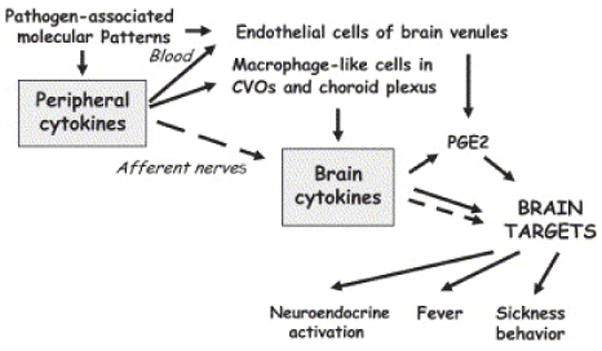Fig. 1.

Mechanisms of brain actions of cytokines. Proinflammatory cytokines are released by activated innate immune cells at the periphery in response to PAMP. PAMP and circulating cytokines act on TLRs on macrophage-like cells in the CVOs and choroid plexus, leading to the production of brain cytokines that diffuse by volume propagation into the brain parenchyma. The action of peripheral proinflammatory cytokines also can be relayed to the brain by afferent nerves, resulting in the production of brain proinflammatory cytokines by microglial cells. In both cases, the action of brain proinflammatory cytokines can be mediated by prostaglandins that diffuse to brain targets or by activation of neural pathways within the brain, which enables the immune message to be transported far away from its site of origin. Prostaglandins can be synthesized only by endothelial cells of brain venules in response to circulating cytokines. Dotted arrows represent instances of neural transmission of the immune message from the periphery to the brain or within the brain itself.
